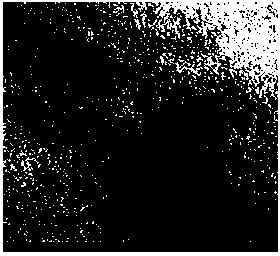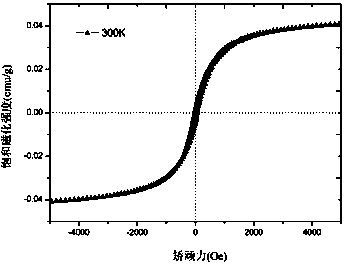Supercritical carbon dioxide method for extraction separation of magnetosomes from magnetotactic bacteria
A carbon dioxide, magnetotactic bacteria technology, applied in the biological field, can solve the problems of poor stability, low yield, poor monodispersity, etc., and achieve the effect of overcoming long extraction cycle, efficient extraction and separation, and good monodispersity
- Summary
- Abstract
- Description
- Claims
- Application Information
AI Technical Summary
Problems solved by technology
Method used
Image
Examples
Embodiment 1
[0026] (1) Organic solvent pretreatment: separate the magnetotactic bacteria culture solution cultivated to the stationary phase in a centrifuge (4000 rpm, 20 min), discard the supernatant, collect the bacteria, and transfer the bacteria cells to 50 mL In a beaker, dissolve the bacterial cells with 0.3ml of a mixed solvent of chloroform and methanol with a volume ratio of 2:1, shake well for 5 minutes, and the color of the sample changes from light yellow to milky white.
[0027] (2) Supercritical CO 2 Extraction and removal of organic solvents: add 5mL double-distilled water to the above beaker, stir magnetically to form a suspension, add the above suspension to a supercritical carbon dioxide reactor, and put the reactor into a constant temperature constant temperature Stabilize in a water bath for a period of time. Introduce carbon dioxide gas into the reaction kettle, under the conditions of a certain temperature of the reaction kettle of 35°C and a pressure of 10Mpa, stir...
Embodiment 2
[0030] (1) Organic solvent pretreatment: separate the magnetotactic bacteria culture solution cultivated to the stationary phase in a centrifuge (4000 rpm, 20 min), discard the supernatant, collect the bacteria, and transfer the bacteria cells to 50 mL In a beaker, dissolve the bacterial cells with 0.3ml of a mixed solvent of chloroform and methanol with a volume ratio of 2:1, shake and shake for 5 minutes, and the color of the sample changes from light yellow to milky white.
[0031] (2) Supercritical CO 2 Extraction and removal of organic solvents: add 5mL double-distilled water to the above beaker, stir magnetically to form a suspension, add the above suspension to a supercritical carbon dioxide reactor, and place the reactor at a constant temperature Stabilize in a water bath for a period of time. Introduce carbon dioxide gas into the reaction kettle, stir and extract for one hour at a certain reaction kettle temperature of 40°C and pressure of 25Mpa, then lower the tempe...
Embodiment 3
[0034] (1) Organic solvent pretreatment: separate the magnetotactic bacteria culture solution cultivated to the stationary phase in a centrifuge (4000 rpm, 20 min), discard the supernatant, collect the bacteria, and transfer the bacteria cells to 50 mL In a beaker, dissolve the bacterial cells with 0.3ml of a mixed solvent of chloroform and methanol with a volume ratio of 2:1, shake and shake for 5 minutes, and the color of the sample changes from light yellow to milky white.
[0035] (2) Supercritical CO 2 Extraction and removal of organic solvents: add 5mL double-distilled water to the above beaker, stir magnetically to form a suspension, add the above suspension to a supercritical carbon dioxide reactor, and place the reactor at a constant temperature Stabilize in a water bath for a period of time. Introduce carbon dioxide gas into the reaction kettle, under the conditions of a certain temperature of the reaction kettle of 60°C and a pressure of 20Mpa, stir and extract for...
PUM
 Login to View More
Login to View More Abstract
Description
Claims
Application Information
 Login to View More
Login to View More - Generate Ideas
- Intellectual Property
- Life Sciences
- Materials
- Tech Scout
- Unparalleled Data Quality
- Higher Quality Content
- 60% Fewer Hallucinations
Browse by: Latest US Patents, China's latest patents, Technical Efficacy Thesaurus, Application Domain, Technology Topic, Popular Technical Reports.
© 2025 PatSnap. All rights reserved.Legal|Privacy policy|Modern Slavery Act Transparency Statement|Sitemap|About US| Contact US: help@patsnap.com



